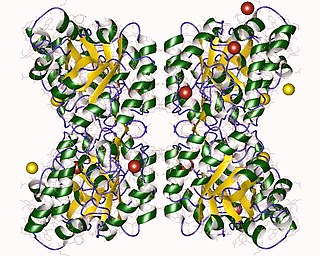| Ectoine synthase | |||||||||
|---|---|---|---|---|---|---|---|---|---|
| Identifiers | |||||||||
| EC no. | 4.2.1.108 | ||||||||
| Databases | |||||||||
| IntEnz | IntEnz view | ||||||||
| BRENDA | BRENDA entry | ||||||||
| ExPASy | NiceZyme view | ||||||||
| KEGG | KEGG entry | ||||||||
| MetaCyc | metabolic pathway | ||||||||
| PRIAM | profile | ||||||||
| PDB structures | RCSB PDB PDBe PDBsum | ||||||||
| |||||||||
The enzyme ectoine synthase (EC ) catalyzes the chemical reaction
- (2S)-4-acetamido-2-aminobutanoate L-ectoine + H2O
This enzyme belongs to the family of lyases, specifically the hydro-lyases, which cleave carbon-oxygen bonds. The systematic name of this enzyme class is (2S)-4-acetamido-2-aminobutanoate (L-ectoine-forming). Other names in common use include N-acetyldiaminobutyrate dehydratase, N-acetyldiaminobutanoate dehydratase, L-ectoine synthase, EctC, and 4-N-acetyl-L-2,4-diaminobutanoate hydro-lyase (L-ectoine-forming). This enzyme participates in glycine, serine and threonine metabolism.







